Byron Joyner, MD, MPA
UWMC-ML is scheduled for a 3-day Clinical Learning Environment Review (CLER) site visit from 30 July to 1 August. Over the next few weeks, I will outline the progress we have made at UW Medicine and UWMC-Montlake (UWMC-ML), specifically in the 6 CLER domains following our last CLER site visit.
The CLER program consists of 6 domains that have evolved to reflect the current state of GME and the world of health care. All 6 domains are closely related and define how the hospital system functions. By performing CLER site visits, the ACGME hopes to provide feedback to enhance physician education and improve patient care quality in these organizations. This report focuses on Patient Safety, the first and most scrutinized CLER domain.
During our last (2019) CLER site visit, CLER site visitors explored several areas of Patient Safety, including 1) Patient Safety Education 2) participation in the patient safety event reporting system, 3) feedback on patient safety event reports, 4) participation of trainees in patient safety event investigations, and 5) the clinical learning environment’s role in monitoring patient safety. We have made the following progress in these areas.
Patient Safety Education
The CLER Pathways to Excellence, version 2.0 provides a framework for hospital leadership, in partnership with GME, to optimize the clinical learning environment by creating and integrating better education and opportunities for better patient care. As such, in addition to training provided by individual programs, GME ensures that all trainees have multiple exposures to patient safety education throughout their time at UW Medicine. There are many examples:
- Patient Safety Orientation – In June of every year, the UW GME Orientation provides introductory educational sessions in Patient Safety.
- A Patient Safety e-Learning module is delivered in the fall of every academic year.
- Housestaff Quality and Safety Committee (HQSC) hosts a boot camp for trainees desiring in-depth training in special topical areas of patient safety and quality.
- Program Level QI Training – The ACGME Common Program Requirements (CPRs) set expectations for all program directors (PD) to train their residents/fellows in QI practices and provide practical experience in patient safety activities. This training has been variable in our system. We have high hopes for the new GME Foundations course.
- GME Foundations in Quality and Patient Safety – At its inception, this two half-day intensive course enrolled 23 programs and over 200 trainees. In AY24, GME and the Center for Scholarship in Care Quality and Safety received funding to expand this 5-hour, standardized training to all trainees and faculty. This should increase quality of care and patient safety.
Patient Safety Event Reporting
2019 CLER Feedback: Low rate of participation in PSN (now Safety Net) reporting.
Goal to Achieve: 50% increase in the number of Safety Net reports submitted by trainees.
Intervention(s): Over the last 3 years:
- Improved feedback to faculty and trainees through the medical director’s office
- Education during UW GME Orientation and the fall Patient Safety E-learning
- Trainee inclusion in adverse event reviews
- Safety Event Classification (SEC), a new addition to Safety Net (formally PSN), has made it easier for UWMC-ML leaders to detect patterns of events and filter by frequency and seriousness which helps to prioritize efforts of prevention
Current Status: Met 1.8% baseline reporting rate for trainees (trainee reports/total reports), 3.6% for Q2 of AY 24

Data collected from UWMC-ML Patient Safety Net. Note, data does not include staff injury events. Events categorized as “Harm” denote that harm actually reached the patient, as opposed to only posing a risk to a patient.
Revised Goal: 5% rate of reporting for trainees (trainee reports/total reports) and faculty (faculty reports/total reports)
Overall, trainees feel that hospital leadership promotes a culture of patient safety and makes every effort to deliver safe and error-free care to patients. Trainees reported that error prevention is discussed and that positive change results from acknowledging and acting upon safety concerns.
Patient Safety Intensive Review (Event Investigation/Adverse Event) Participation
2019 CLER Feedback: Low rate of participation in Patient Safety Intensive Reviews (Event Investigations).
Goal to Achieve: 50% of Intensive Reviews (Adverse Event Reviews) each quarter should include trainee participation.
Intervention(s): Over the last 3 years, we devised an elegant solution:
- In partnership with GME and Patient Safety Leadership team at UWMC-ML, trainees have been invited to attend intensive (event) reviews.
- Copies of the invitations were sent to trainees’ PDs who could remove barriers to attending the Intensive Review (Event Investigations).
Current Status: 100% of Patient Safety Intensive Reviews (Event Investigations) Q1 – Q3 of AY24 had trainees in attendance. Q2* data is not yet complete.

Monitoring of the numbers of individuals participating in patient safety event investigations and Safety Net report submissions is done monthly by UMWC-ML’s Center for Clinical Excellence (CCE). Additionally, this data is reported to the GMEC.
Conclusion:
This work has had a notable impact on our trainees’ perception of our institution’s culture of safety. On our most recent culture of safety survey by Press Ganey, our trainees rated UWMC-ML’s patient safety culture well above the national average at 4.18 (+0.21 above the national average for other academic medical centers) and the faculty rating was also better than the national average (4.01).
There is more work to do. Supporting this work requires multidisciplinary collaboration between our GME leadership, hospital leadership, quality improvement and patient safety leaders, and our nursing colleagues. Dr. Strizich, Director of Quality & Patient Safety for CLER, has chaired our GMEC CLER Subcommittee for the past three years. This committee has representation from our GME team, PDs, program administrators, trainees, our medical director’s office, patient safety leadership, risk management, as well as from our nursing colleagues and is tasked with monitoring and supporting our efforts to improve our clinical learning environment.
We are excited to continue to expand this work and find new ways to enhance the culture of safety within our clinical learning environments.
Be on the lookout for more updates on CLER in the following weeks. Meanwhile, check out our UW GME CLER website.
